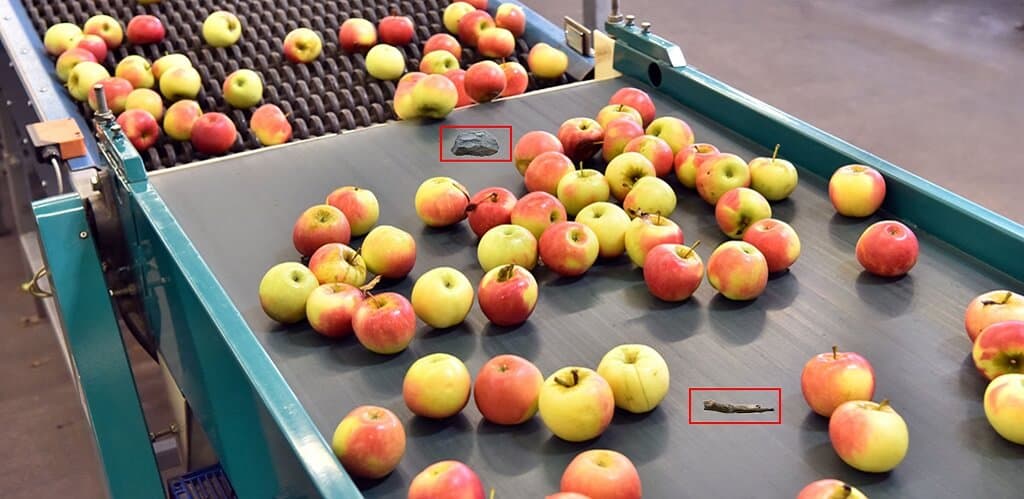How to Prevent Foreign Objects in Food?

Key Takeaways
- Major Risk: Foreign object contamination is a significant food safety concern
- Multiple Sources: Contaminants can enter at any point in the production chain
- Detection Technology: Computer vision and automated systems offer superior detection capabilities
- Preventive Approach: Identifying contamination sources is crucial for prevention
- Regulatory Compliance: Effective detection systems help meet food safety standards
Understanding the Challenge of Food Contamination
Food contamination through foreign objects represents one of the most significant challenges in the modern food industry. These unwanted materials can enter food products at various stages of production, processing, and distribution, posing serious health risks to consumers and substantial financial and reputational damage to manufacturers.
The impact of foreign object contamination extends beyond consumer safety concerns. When contamination is discovered, manufacturers often must discard entire production batches, leading to significant waste, production delays, and potential recalls that can cost millions.
Common Sources of Foreign Object Contamination
Processing and Manufacturing Contaminants
Food processing facilities present numerous contamination opportunities:
- Metal fragments from machinery wear and tear
- Plastic pieces from equipment components
- Inedible animal parts (bones, cartilage) in meat products
- Chemical residues from cleaning agents
- Loose bolts, screws, or equipment parts
Agricultural Contaminants
During harvesting and initial processing, agricultural products can become contaminated with:
- Stones and soil pulled up by harvesting equipment
- Plant matter from non-food portions of crops
- Animal waste from field pests
- Insect parts incorporated during harvesting
Distribution and Storage Issues
As food moves through the supply chain, additional contamination risks emerge:
- Wood splinters from shipping pallets
- Metal fragments from nails and screws in pallets
- Insect infestations during transportation or storage
- Packaging materials like staples or plastic fragments
Advanced Detection Solutions
Computer Vision Technology
Modern food safety systems increasingly rely on computer vision technology to identify foreign objects. These systems use specialized cameras and artificial intelligence to detect anomalies in food products moving along production lines.
Key advantages of computer vision detection include:
- Identification of both metallic and non-metallic contaminants
- High-speed inspection without slowing production
- Consistent performance without human fatigue
- Detection of small contaminants easily missed by visual inspection
- Data collection for process improvement
Comprehensive Detection Systems
Effective foreign object detection typically combines multiple technologies:
- Metal detectors for ferrous and non-ferrous metals
- X-ray systems for dense materials like glass and stone
- Vision systems for visible contaminants
- Magnetic separators for ferrous metals
- Filtration systems for liquid products
Implementation Best Practices
To maximize the effectiveness of foreign object detection efforts, manufacturers should:
-
Conduct Risk Assessments: Identify potential contamination points throughout the production process
-
Implement Multiple Detection Methods: Deploy complementary technologies at critical control points
-
Establish Verification Procedures: Regularly test detection systems with sample contaminants
-
Train Personnel: Ensure staff understand contamination risks and detection procedures
-
Maintain Equipment: Regularly inspect and maintain both production and detection equipment
Conclusion
Preventing foreign object contamination requires a comprehensive approach that addresses potential sources throughout the production chain while implementing effective detection technologies. By combining preventive measures with advanced detection systems, food manufacturers can significantly reduce contamination risks, protect consumers, and safeguard their brands.
Computer vision and AI-powered detection systems represent the cutting edge of food safety technology, offering unprecedented capabilities to identify and eliminate foreign objects before they reach consumers. As these technologies continue to advance, we can expect even greater improvements in food safety and quality assurance.
This article provides a historical perspective on foreign object detection in food processing. While Visionify now specializes in computer vision solutions for various industries, we recognize the continuing importance of vision-based inspection systems in ensuring food safety.
Frequently Asked Questions
Find answers to common questions about this topic
Want to learn more?
Discover how our Vision AI safety solutions can transform your workplace safety.
Schedule a DemoSchedule a Meeting
Book a personalized demo with our product specialists to see how our AI safety solutions can work for your business.
Choose a convenient time
Select from available slots in your timezone
30-minute consultation
Brief but comprehensive overview of our solutions
Meet our product experts
Get answers to your specific questions
Related Articles
Subscribe to our newsletter
Get the latest safety insights and updates delivered to your inbox.


